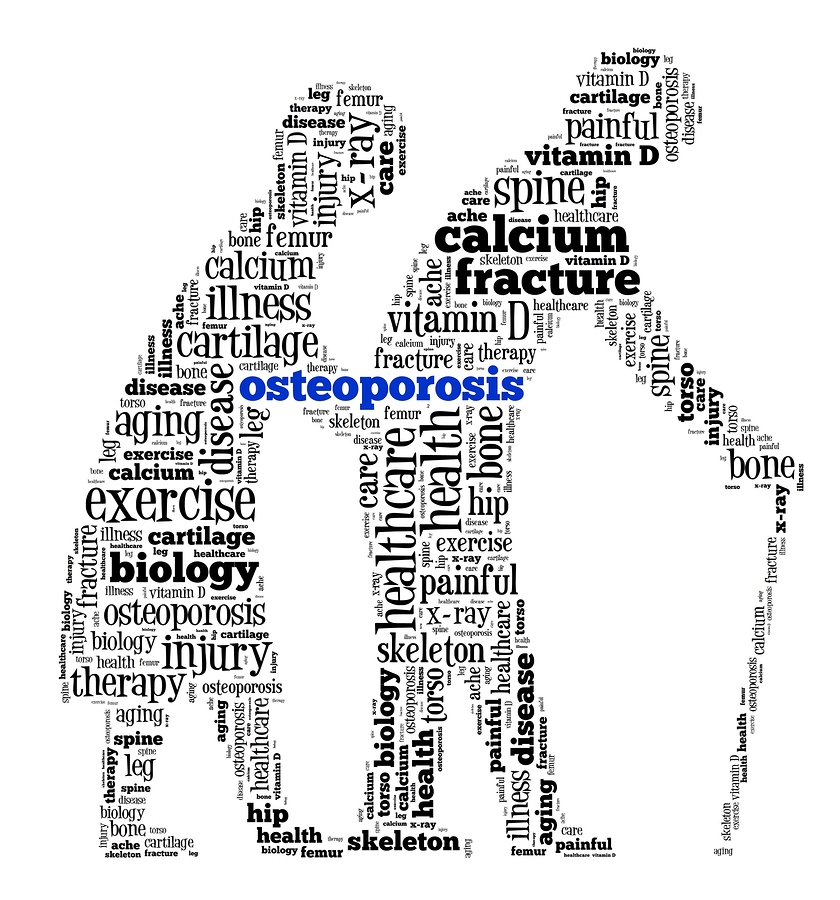 Most people think of bones as building materials. They just form the frame that holds our bodies up, much like wood or steel support beams in a building.
Most people think of bones as building materials. They just form the frame that holds our bodies up, much like wood or steel support beams in a building.
Bone is actually living tissue in which nutrients and essential minerals are constantly absorbed and replaced by our bodies. Instead of thinking of bone as a 2X4, think of bone as a bank. We’re either making deposits or withdrawals. The key is to make more deposits than withdrawals.
Osteoporosis occurs when we become overdrawn. In other words, more old bone is removed than new bone is created. This causes a thinning or weakening of the bone, making it so brittle that a compression or spinal fracture can result from something as simple as a sneeze, a cough or bending over.
Effects of Osteoporosis
In the United States, approximately 1.5 million osteoporotic fractures occur each year. A little more than 500,000 are spinal fractures, and about 300,000 are hip fractures.
One out of every three Caucasian American women will experience a spinal fracture by age 65. These fractures often result in a deformation of the spine, many times with painful, crippling effects, including chronic back pain, difficulty breathing, digestive dysfunction, increased mortality and loss of height.
Hip fractures actually pose the greatest threat to our quality of life. Up to 50 percent of people who suffer a hip fracture need help with daily living, 30 percent enter long-term care and 20 percent die shortly afterwards.
Unfortunately, there isn’t much you can do for a compression fracture other than topical pain relief therapy, like physical therapy or injections by a pain management doctor. There are orthopedic surgical techniques for treating osteoporosis, but we want to avoid surgery whenever we can.
Diagnosing and Identifying Causes of Osteoporosis
Bone health is measured with a dual energy x-ray absorptiometry (DEXA) scan. A DEXA scan passes two energy beams through bone in your lumbar spine or hip and measures density based on the amount of x-rays that pass through the bone. A bone density test with give you a T-score, which will determine your risk level related to osteoporosis.
A lifestyle assessment will also help you determine your risk level based on genetics and your environment. In addition to family history, the lifestyle factors can contribute to nutrients and minerals being “robbed” from our bones.
A diet deficient in vital nutrients can lead to osteoporosis. Since we’ve industrialized our farming over the last 100-150 years, our soil doesn’t have the same nutrient content that it had when we lived in a more agricultural environment.
Also, diets containing large amounts of bone-depleting dietary excesses, especially processed foods, byproducts of wheat and many dairy products, can create an inflammatory process that puts us at greater risk of osteoporosis.
Although we consume more cow’s milk than any other country, we need to wake up to the fact that cow’s milk is produced for one reason – to feed baby cows.
Cow’s milk doesn’t prevent osteoporosis because the calcium and protein in cow’s milk isn’t necessarily good for our bones. There are much better sources of essential nutrients, including calcium, in our food supply, particularly in dark green leafy vegetables like kale, spinach and collards.
Other factors include a lack of exercise, poor digestion, menopause or other estrogen-reducing conditions, tobacco and alcohol excess, long-term medication use, and stress, which increases the production of hormones like cortisol, creating a bone-robbing scenario.
This is the year of the family. If we’re going to take our health back and avoid the crippling effects of osteoporosis, we need to make better decisions each and every day.
Coming soon in Part 2: The Downstream Effect
It’s important to realize that you don’t wake up one day with weak bones. Osteoporosis is very often a downstream disorder caused by a breakdown in one of our body’s many systems. We’ll discuss this in more detail in Part 2 of our post on osteoporosis.
If you have any questions about osteoporosis, please post them here or email me privately at jproodian@naturalhc.com.
Dr. James Proodian is an accomplished chiropractic physician and health educator who founded Proodian Healthcare Family of Companies to help people feel better, function better, and live longer. His expertise for the past two decades has been in physical rehabilitation, and he has successfully established himself as a spinal specialist. In his practice, he advocates the science of functional medicine, which takes an integrative approach to treating patients by addressing their physical, nutritional, and psychological needs. Alarmed by the escalation of complex, chronic illness in our country, Dr. Proodian has been speaking to companies and organizations through his “Wellness at Work” program since 1994, motivating thousands of people to make positive lifestyle choices and lead healthier, more productive lives. He can be heard weekly on his radio program, “Proodian Healthcare By Design,” on Tandem Radio.